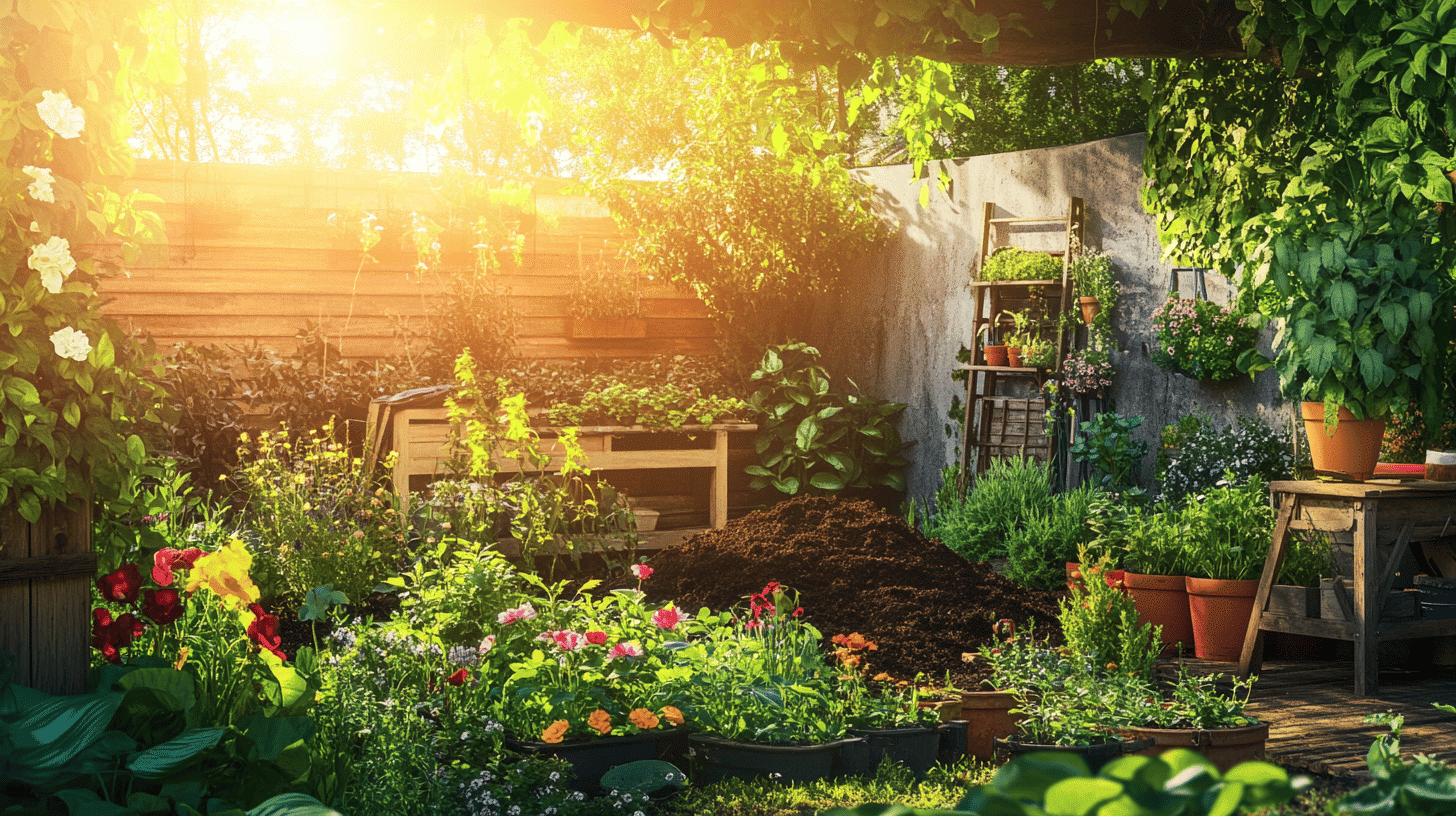Creating a sustainable garden is not only a pleasurable activity, but also an effective way to contribute to the health of our planet. The concept of sustainability is directly linked to the responsible use of natural resources, and cultivating a garden is an excellent way to incorporate it into our daily lives. In this article, we will explore the best practices for cultivating a sustainable garden that not only beautifies the environment but also promotes biodiversity and conserves natural resources.
Why a Sustainable Garden?
A sustainable garden is one that uses practices that prioritize the preservation of the environment. This includes choosing native plants, using cultivation techniques that reduce the need for water, and minimizing the use of chemicals. By choosing methods that respect the local ecosystem, we contribute to the preservation of biodiversity and environmental balance.
1. Choosing Native Plants
One of the first tips for growing a sustainable garden is to choose plants that are native to your region. These plants are adapted to the local climate and soil, which means they require less water and care than exotic species. In addition, native plants attract pollinators, such as bees and butterflies, which are essential for maintaining biodiversity.
2. The Importance of Composting
Composting is a fundamental practice for those who want to have a sustainable garden. By turning food scraps and other organic materials into fertilizer, you not only reduce the amount of waste that ends up in landfills, but you also naturally enrich your garden soil. Composting improves soil structure, retains moisture, and provides essential nutrients for plants.
3. Layer Planting Technique
The layered planting method, known as “permaculture,” is another excellent strategy for those who want a sustainable garden. It involves growing plants at different levels, which maximizes space and allows for better use of sunlight. In addition, plants that grow together can benefit from each other, creating a favorable microclimate and reducing the use of fertilizers.
4. Water Reuse
Irrigation is one of the most water-intensive aspects of a garden. Therefore, adopting measures to reuse water can be a significant contribution to sustainability. Installing rainwater harvesting systems or using water from washing vegetables to irrigate plants are some effective alternatives. In addition to saving water, you will be taking more conscious care of your garden.
5. Use of Organic Fertilizers
Avoiding synthetic chemicals is key to a sustainable garden. Instead of opting for conventional fertilizers, which can contaminate your soil and water, use organic fertilizers. There are many options available, including manure, green manure, and seaweed-based products. These fertilizers help keep your soil healthy and promote balanced plant growth.
6. Natural Pest Control
Instead of resorting to chemical pesticides, you can adopt natural pest control methods. Attracting natural predators, such as ladybugs and birds, is an effective strategy. Additionally, using insect-repellent plants, such as basil and lavender, can protect your garden without harming the environment.
7. Growing in Pots and Vertical Gardens
If space is limited, don’t despair! Growing in pots and vertical gardens are great solutions for small spaces. Using these techniques, you can grow herbs, flowers and even vegetables in small areas, such as balconies and terraces. In addition to being sustainable, these gardens are aesthetically pleasing and can add a touch of greenery to any space.
8. Crop Planning and Rotation
Planning your garden space is essential. Crop rotation, which involves alternating different types of plants in the same space, helps keep the soil fertile and reduces the incidence of pests and diseases. Alternate between vegetables, greens, and flowers to achieve healthy, productive soil.
9. Awareness and Dissemination
Growing a sustainable garden is also an opportunity to share your experiences and raise awareness about environmental issues. Encourage friends and family to adopt sustainable practices in their own gardens and use your communication channels, such as social media, to share your achievements and methodologies.
10. Sustainable Maintenance
Finally, maintenance is a vital part of growing a sustainable garden. Garden mindfully, avoiding excessive use of chemicals and respecting the natural cycles of plants. Monitor your plants’ growth and challenges, making adjustments when necessary.
Conclusion
Growing a sustainable garden is a practice that benefits not only the owner of the space, but the planet as a whole. By adopting practices that respect the environment and optimize natural resources, you are contributing to the preservation of biodiversity and promoting environmental awareness. No matter the size of your garden, every step towards sustainability counts. Start transforming your green space today and reap the benefits of a healthier, more harmonious environment. Are you ready to make your garden an example of sustainability?



